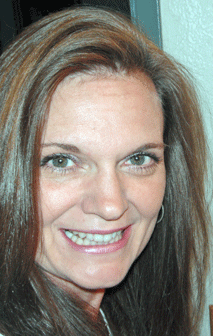|
|
|||
|
|
January, 2012
Staying Connected with Tina Millican |
"like" us on
join our list |
|
|
|
|||
|
Tina Millican is a mother, Postpartum Doula, Parent Educator and founder of Doula Services Northwest. Her Wisdom and Wit, Grace and Laughter, makes it easy to connect with the families she works with. She is passionate about women's health, parenting, nurturing the family unit and child development.
|
The Stories of Our Life Letting go and giving room for children to create their own stories
Life is filled with stories. These stories make our individual biography unique and sometimes inspirational to others. Our lives have decorated bookends; one placed when we are born, and the other acknowledging the end of our journey. The choices, decisions and adventures we make on our life’s journey fill the space between these monumental bookends.
For each of us, that space between the bookends contains many wonderful-- sometimes funny, sometimes tear-filled-- stories that weave together our life and create meaning and purpose. Whether is it a story about growing up, school or college adventures, travels abroad, various career moves, relationships (the good, bad and the ugly), the trial and tribulations of parenting, medical ailments, magical moments we keep close to our heart (a first kiss, a first love, a first car, a first child), accomplishments that make us throw up our arms in pride and say “I did it”, or growing old, the journey is exactly what it is meant to be. Asha Tyson, author and motivational speaker, summarizes this point nicely. In a quote she says:
Sometimes our choices, our stories don’t seem to be the best. We are ridden by guilt, remorse or punishment, but the deep pit of regret is not meant to be endless. The deep pit has light in the distance and a ladder for us to crawl out. We walk to that light, climb the ladder, dust ourselves off and try to learn from the mistake that was made. It is our story! We do our best to forgive ourselves and move on. These challenges are what make our story interesting and of inspiration to ourselves and others.
As a parent, we know the mistakes that we made, and continue to make in our life journey. We want to protect our children from falling into the deep pit we are familiar with and know doesn’t feel good. But we must plant the seeds and let our children create their own journey, develop their own stories. Our children’s lives will be more meaningful when they make their own decisions and lead the life for which they are intended. They will develop the many stories that fill the space between their bookends. Stories which they will someday look back and reflect upon and bring meaning and purpose to their lives.
So as parents, how do we let go and let our children construct their own journey, helping them to see what meaning and importance certain experiences have in forming their self-concepts and philosophy of life?
We first need to recognize that each child is unique from birth and has different temperaments. Children grow at their own pace, and this pace varies from child to child. At the same time, it is important to have positive expectations about what children can do and hold on to the belief that every child can succeed. According to Family Therapist Randy Rolfe, The Seven Secrets of Successful Parenting, letting go is an art that requires finely tuned skills taking time and conscious effort. Sometimes we let go too soon and other times hang on too long. Good news - if we discover we are making a mistake, there is always an opportunity to begin repair. Below are some ideas from the book The Seven Secrets of Successful Parenting to keep in mind and develop as you grasp the full impact of knowing that your child’s life is, after all, her own.
#1 Facilitate and build strong and supportive environments for your child.
We now know from extensive research on brain development over the last 20 years, that from birth your child is a fully formed person. Her life is as full spiritually, physically, emotionally and intellectually as your own. She has a life beyond your direction or control. Through genetics/heredity she already has a foundation consisting of temperament, health, and intellectual capacity. The foundation is ready to be built upon.
Generally speaking, if strong and supportive environments are built in the early years (read on for tips), the more confident parents will feel to let go of certain behavior, actions and activities at appropriate times.
#2 Let your child guide his own deep satisfaction and happiness.
You will help him most by reinforcing with joy his attempts to seek out those qualities in his life and by facilitating his attaining them. This will require you as a parent to be available; listen and try to connect often. How you respond to cues and clues makes a world of difference in his learning and development. Notice his moods and respond to him when he is upset as well as happy. Try your best to understand what your child is feeling, what he is telling you at various stages of his development. Give him space to direct. When playing, follow his lead and let him make decisions and create the game. Be involved when invited and pull back when he has had too much. It’s a progressive learning game and will change as your child becomes more independent and his needs change. Remember that it is just as important to remain connected during early teens and adolescence as when your child is and infant or toddler.
#3 Set a positive example: be the model behavior you would like to see in your child.
Imitation and experience is how children learn. At first, they rely on delicate programming to imitate your behavior and that of others. After they achieve a sense of mastery they will switch to learning from their own experiences. At this point, it is important to be the observer. If you acknowledge their level of mastery and offer guidance during experimentation, you have a greater chance of maintaining lifelong influence without stifling or trying to control.
#4 Let Go Gradually.
Let your child know that you are attempting to let go of things as you feel he is mastering experiences. Your child will appreciate your efforts to do it thoughtfully and gradually, with minimal risk to his safety or the trust between you.
Be careful, especially regarding basic needs, that you don’t just drop the ball and expect the child to take over the responsibility when he is not ready. At each new stage of development, watch for cues and clues that will give you the information that tells you he is asking for more decision making or independence.
Questions to Ask Yourself
As a parent, I know that letting go at every stage of development brings with it a sense of triumph as well as sadness. The joy really comes when you see through the lens of your child; you see that he is living a life rooted in your foundation but also decorated with the stories that give your child his own deep satisfaction and happiness. His stories, his journey, are exactly what they should be.
Tina Millican Mom, Postpartum Doula, New Parent Consultant
Further Readings and Sources
Rolfe, Randy, (2011), The Seven Secrets of Successful Parenting, iUniverse, Incorporated
Graham, Judith, Bulletin #4356 Children and Brain Development: What we know about How Children Learn (University of Maine Cooperative Extension)
Shonkoff, J.P., & Phillips, D.A. (Eds). (2000). From Neurons to Neighborhoods: The Science of Early Childhood Development National Academies’ Press. Retrieved from http://www.nap.edu/catalog/9824.html
Shore, R. (1997). Rethinking the Brain: New Insights into Early Development. New York, NY: Families and Work Institute, pp. 16-17.
|
||

